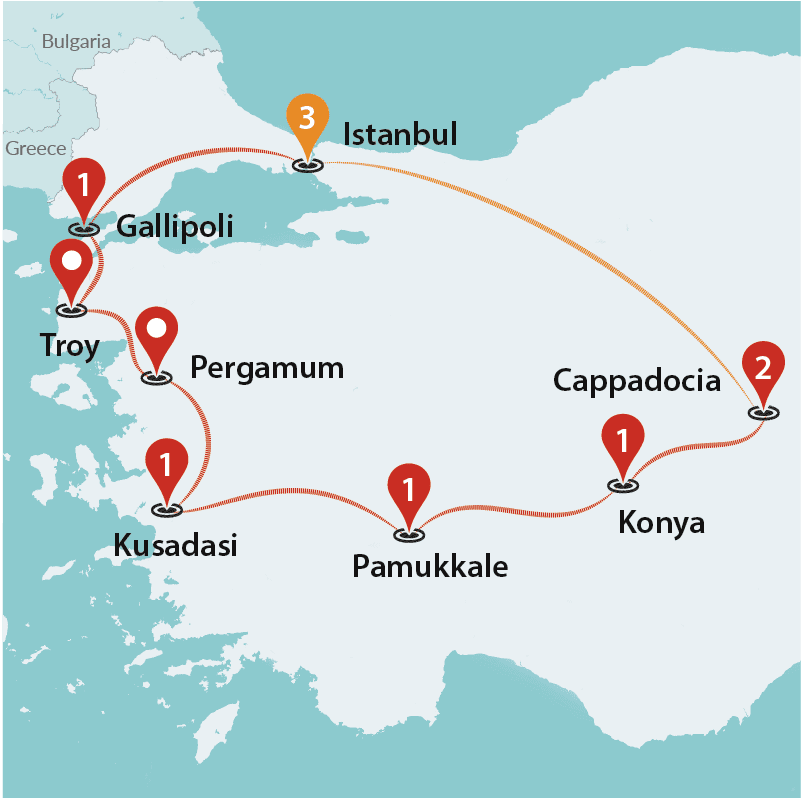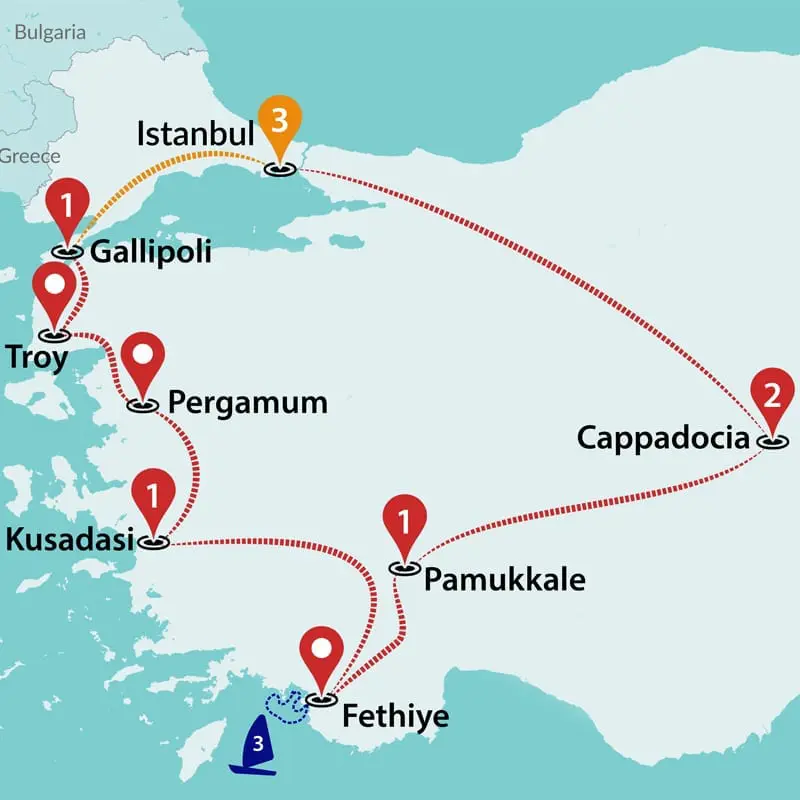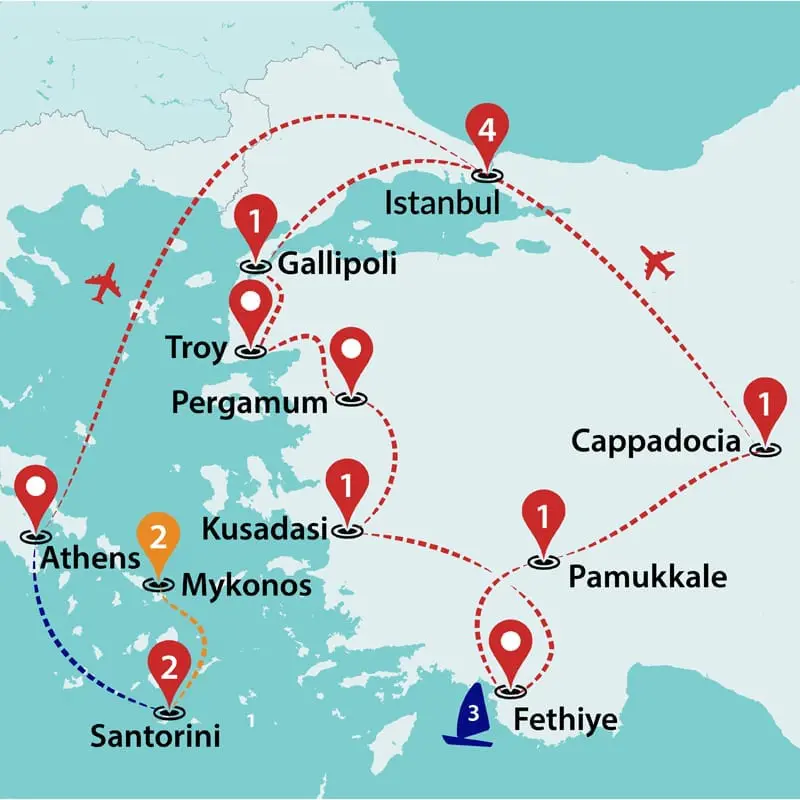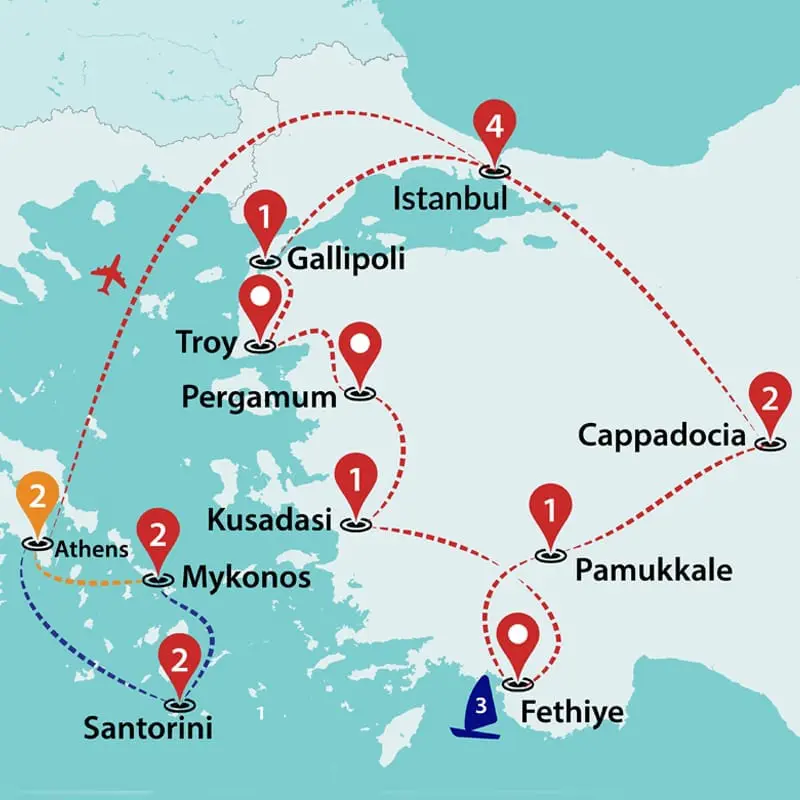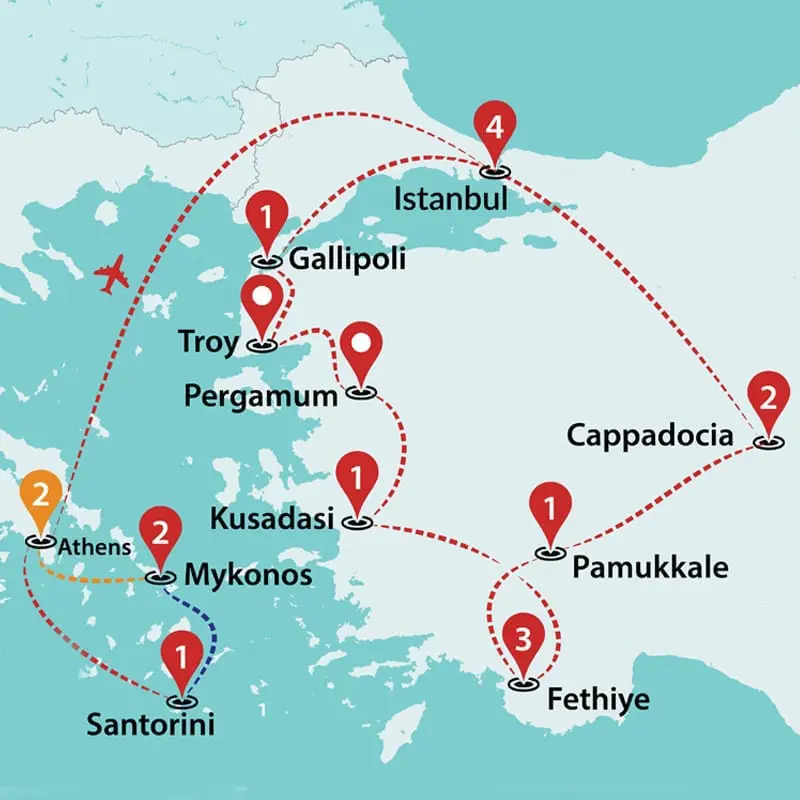Gallipoli
A poignant history lies hidden in plain sight in Gallipoli, Turkey’s atmospheric World War I stronghold.

Loss and pride are so essential to the fabric of the Gallipoli Peninsula that it is one of the primary national heritage sites in Turkey. Bolstered by the dramatic Aegean sea, its fertile lands remain untouched since World War I. The entire battleground with the cemeteries is preserved as the Gallipoli Campaign Historic Site, offering several spots with symbolic significance. Each year, people from New Zealand and Australia make a pilgrimage here to remember their fallen soldiers.
Several sections of Gallipoli are home to memorials and monuments dedicated to different battles. Chunuk Bair is the most iconic, marked by the colossal statue of Turkish national hero, Atatürk. Some 3 kilometers away is Lone Pine, where the picture gets slightly more moving. This Anzac cemetery brims with emotional symbolism. It receives its name after the solitary pine still standing after a destructive forest fire wiped away all the other trees. The loss and grief of WWI are written on the tombstones in poetic epitaphs, while the grave of a 14-year-old soldier—the youngest to die in the battles of Gallipoli—resides here.
Take a scenic trip to the Anzac Cove, engraved in the memories of three nations as the site of the first landing of Australian and New Zealand armies. A heartfelt scripture welcomes visitors to the cove’s entrance, paying tribute to the foreign soldiers and their communities with a profound message emphasizing peace and unity in the world. Behind this touchy scene is a breathtaking backdrop embellished by the glaring Aegean sea. A narrow beach, where one of the most bloody battles of Turkish history took place, highlights the view.
 February Sale; 2 For 1
February Sale; 2 For 1  Croatia Sailing : 2 For 1
Croatia Sailing : 2 For 1 Asia Tours : 2 For 1
Asia Tours : 2 For 1 Central & Eastern Europe Tours: 2 For 1
Central & Eastern Europe Tours: 2 For 1  Why Travel Talk
Why Travel Talk Travel Talk Blog
Travel Talk Blog Responsible Travel
Responsible Travel Fair Travels with Travel Talk
Fair Travels with Travel Talk
